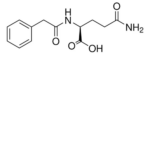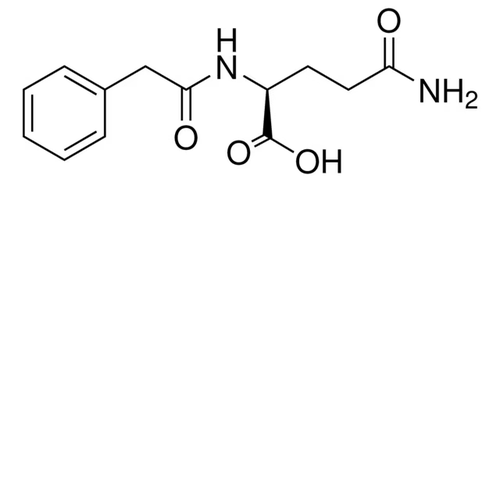| Product Name | Phenylacetyl-L-glutamine |
| Description |
Bioactive gut microbial metabolite |
| Purity | >98% (HPLC); NMR (conforms) |
| CAS No. | 28047-15-6 |
| Molecular Formula | C13H16N2O4 |
| Molecular Weight | 264.3 |
| Field of Use | Not for use in humans. Not for use in diagnostics or therapeutics. For in vitro research use only. |
Properties
| Storage Temperature | -20ºC |
| Shipping Temperature | Shipped Ambient |
| Product Type | Inducer |
| Solubility | May be dissolved in DMSO (45 mg / ml) |
| Source | Synthetic |
| Appearance | Off-white powder |
| SMILES | C1=CC=C(C=C1)CC(=O)NC(CCC(=O)N)C(=O)O |
| InChI | InChI=1S/C13H16N2O4/c14-11(16)7-6-10(13(18)19)15-12(17)8-9-4-2-1-3-5-9/h1-5,10H,6-8H2,(H2,14,16)(H,15,17)(H,18,19)/t10-/m0/s1 |
| InChIKey | JFLIEFSWGNOPJJ-JTQLQIEISA-N |
| Safety Phrases |
Classification: Warning Hazard Statements, H302 (100%): Harmful if swallowed [Warning Acute toxicity, oral] Precautionary Statement Codes,: P264, P270, P301+P317, P330, and P501 |
| Cite This Product | Phenylacetyl-L-glutamine (StressMarq Biosciences Inc., Victoria BC CANADA, Catalog # SIH-611) |
Biological Description
| Alternative Names | (S)-5-Amino-5-oxo-2-(2-phenylacetamido)pentanoic acid; N-Phenylacetylglutamine; Phenylacetylglutamine; Phenyl-Ac-Gln-OH; NSC-203800; PAG |
| Research Areas | Cardiovascular System |
| PubChem ID | 92258 |
| Scientific Background | Phenylacetyl-ʟ-glutamine is a versatile compound that finds application in microbiome and metabolomics research. Gut-microbiota-dependent PAG is associated with cardiovascular disease pathogenesis (1) via action at adrenergic receptors (2). Plasma PAG levels may be a valuable indicator for predicting coronary in-stent restenosis (3). |
| References |
1.Romano K.A., et al. (2022) Circ. Heart. Fail. e009972 Online ahead of print 2.Nemet I., et al. (2020) Cell. 180:862 3.Yua F., et al. (2022) Front. Cardiovasc. Med. 9:944155 |



Reviews
There are no reviews yet.